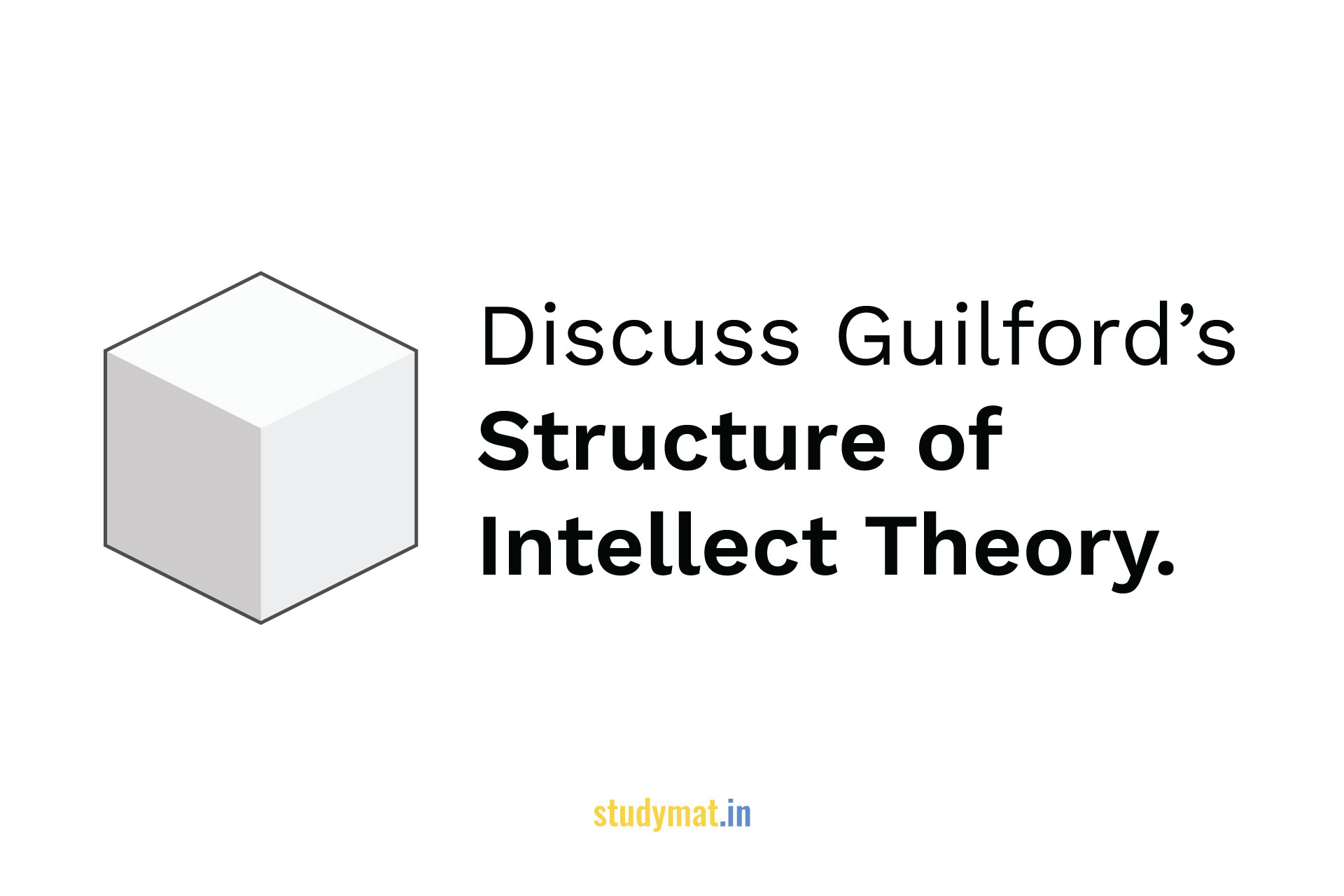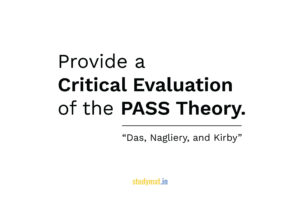In this article, we will Discuss Guilford’s Structure of Intellect Theory or Three Dimensional Theory.
Guilford’s Structure of Intellect Theory / Three Dimensional Theory.
Guilford’s Structure of Intellect (SOI) Model is a multiple intelligences theory. He believed that intelligence wasn’t a monolithic, global attribute but a combination of multiple abilities, that were relatively independent. He applied the factor analytical method to learn these mental abilities. Based on the views of Thurstone, Guilford rejected Charles Spearman’s view that intelligence might be characterized by a single numerical parameter (“general intelligence factor” or g). He also rejected broad factor groups like that of Thurstone’s primary abilities. According to him, intelligence consists of several intellectual abilities. Guilford felt there needed to be a system developed to classify the new mental abilities being discovered.
The first version of the SOI model was presented in 1956. The SOI explains intelligence as a systematic collection of abilities or functions for processing different kinds of items of information in several ways. Originally the SOI model included Four types of Mental Contents Dimension (Figural, Symbolic, Semantic, and Behavioural), Five types of Operations Dimension (Cognition, Memory, Evaluation, Convergent Production, and Divergent Production), and Six types of Products Dimension (Unit, Class, Relations System, Transformation, and Implication). Therefore, result in 120 factors, with over 100 having been empirically confirmed. This model is signified as a cube with each of the three dimensions occupying one side. Many of the abilities are believed to be connected. The model also proposes where new abilities may be discovered based on existing abilities.
Want to enhance your writing skill like us?
Later, Guilford (1977) modified his model and divided the figurative factor of the content dimension into visual and auditory factors, therefore making five types of the contents dimension, instead of the original four types. In the modified version the number of cells became 150 (5 contents × 5 Operations × 6 Products = 150 cells).
Read Also:
Describe the Research Methods in Cognitive Psychology.
Mental Contents Dimension:
This dimension contains the broad areas of information in which operations are applied. It has divided into five categories.
- Visual – Information arising from stimulation on the retina in the form of an image.
- Auditory – Information arising from stimulation of the cochlea of the ear as an image.
- Symbolic – Information is perceived as symbols or signs that have no meaning by themselves. For Example, Arabic numerals or the letters of an alphabet.
- Semantic – Information perceived in words or sentences, whether oral, written, or silently in one’s mind.
- Behavioural – As acts of an individual/individual’s information is perceived.
Operations Dimension:
This dimension contains five kinds of operation or general intellectual processes.
- Cognition – Ability to understand, comprehend, discover, and become aware.
- Memory – Ability to memorize information.
- Evaluation – Process of judging whether an answer is accurate, consistent, or valid.
- Divergent Production – Process of producing multiple solutions to a problem.
- Convergent Production – Process of concluding a single solution to a problem.
Read Also:
Provide a Critical Evaluation of the PASS Theory.
Products Dimension:
This dimension contains results of applying particular operations to specific contents. There are six types of products.
- Unit – Represents a single item of information.
- Class – A set of items that share some attributes.
- Relation – Represents a connection between items or variables; might be linked as opposites or in associations, sequences, or analogies.
- System – An organization of items or networks with interacting parts.
- Transformation – Change’s perspectives, conversions, or mutations to knowledge; for example, reversing the order of letters in a word.
- Implication – Predictions, inferences, consequences, or anticipations of knowledge.
Evaluation:
Despite these criticisms, it is a valuable note that Guilford left a significant mark on research into intelligence. Many tests are still used in modern intelligence testing that was modified and developed under his guidance.
Follow us:
If you like this article, you can Follow us on Facebook.
Also, you can Join our Official Facebook Group for QnA Sessions and Discussions with the worldwide IGNOU community.


